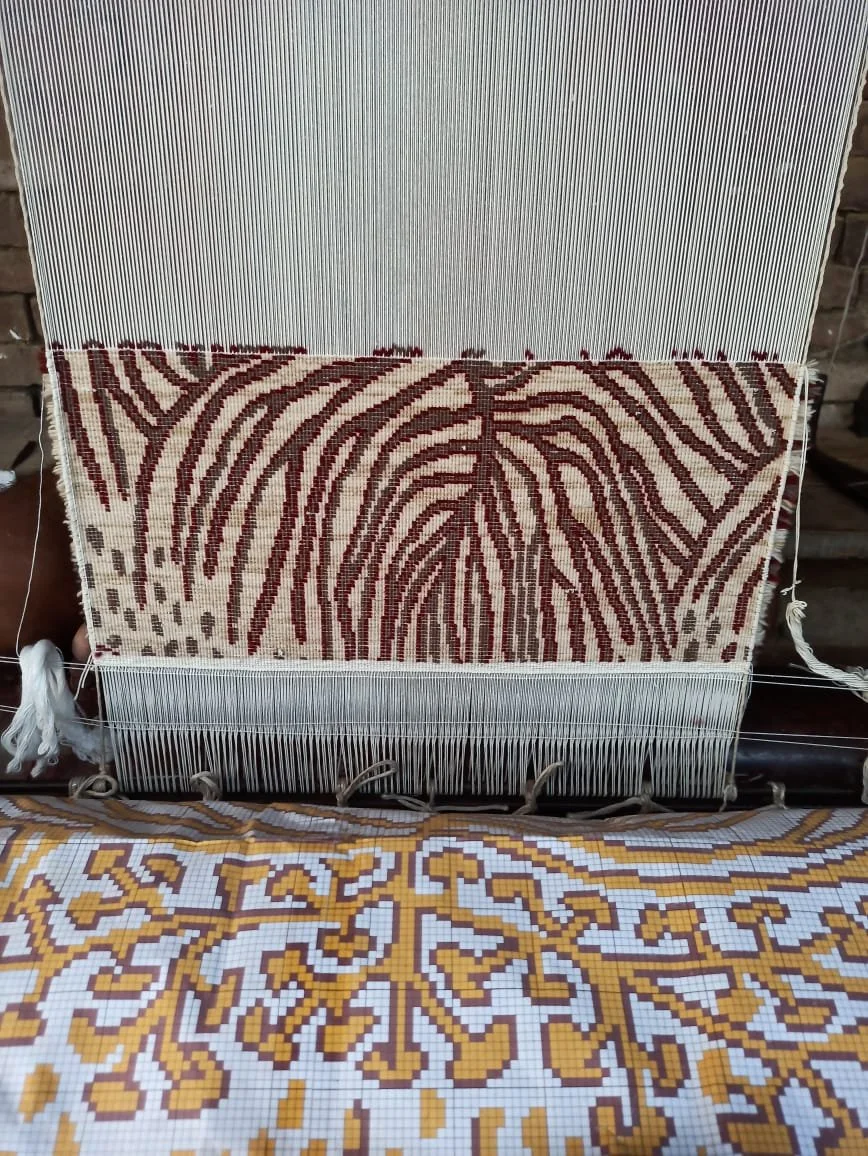Metro | Runner
In the history of rug making, there has been a consistent trend of creating designs that can be transferred between different shapes. However, when changing the shape of a rug, such as from a square to a rectangle, it is essential to maintain its dialogue with the environment.
Rectangles, particularly runners, present a unique challenge. These shapes are often defined by their surroundings and are typically placed in narrow, dimly lit areas. While traditional rug designs from the Middle East have often used borders and small motifs to create balance, modern designers find themselves with a more limited toolkit to enhance a room's aesthetics.
Bidwill's work combines European and British modernist painting traditions with contemporary awareness. She has mastered the art of translating her paintings into rugs. "Metro" was one piece from her first collection that caught my eye. Colours and abrash techniques in the tufting stage made this work come alive, instantly capturing the audience's attention.
Details | Metro /Runner
Her design for a runner rug was originally inspired by "Metro". She introduced a lively hue of colours into the composition, manipulating the audience's tendencies to predict the movement of shapes and colours. Along the way, the design surprises your eyes with clever tricks. There are sharp, end-pointed shapes that appear to need completion at the rug's edges. However, your eyes are misled by well-placed shapes that open your view to a more expansive space.
Bridget's style approach to rug-making adds a fresh aesthetic to any room or hallway. Her ability to weave her creativity into these complex designs demonstrates a profound understanding of both her canvas and her craft. Whether preserving the traditional dialogue between the rug and its environment or introducing new and bold elements, Bridget's work represents a vivid and refreshing take on an age-old art form.









